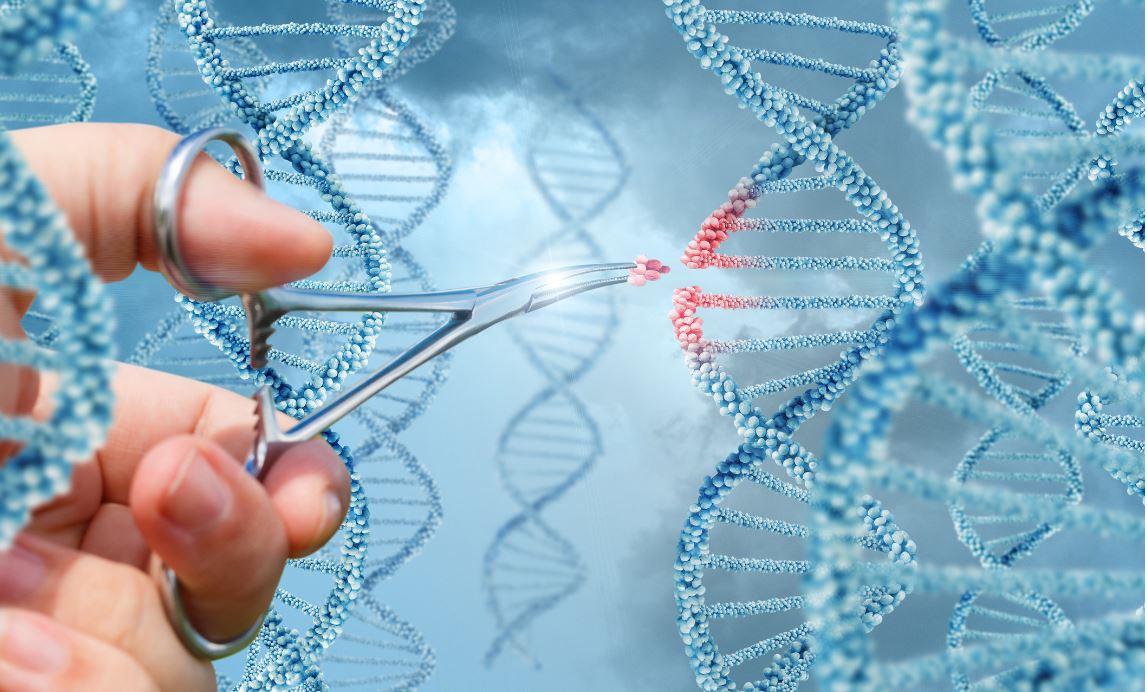It was only in 1953 that James Watson and Francis Crick discovered the double helix of human DNA.
But the following 65 years have yielded scientific advances at an incredible rate. Today we have a much deeper understanding of how genomes are passed on, and what causes genetic diseases. Could medical science soon eradicate those causes entirely?
What is a genome?
Genomes are essentially genetic material. When we reproduce, the DNA’s double helix splits in two, passing on half of each parent’s DNA to the child. Unfortunately, this includes faulty genes and mutations which can occur as cells divide. Even a small genetic error can cause a serious disease.
How can genomes be edited?
Five years ago, a form of gene editing was discovered which uses “molecular scissors” to cut out, replace or tweak one very specific strand of DNA. The process is called CRISPR Cas9, or CRISPR. It is now used in lab trials all over the world to manipulate the genes of plants and animals.
What could this mean for medicine?
Scientists hope eventually they will be able to edit the strands of human DNA which cause currently untreatable genetic disorders, including Huntingdon’s disease and cystic fibrosis.
Early studies suggest gene editing for therapeutic purposes could be a reality within the next decade. The first human trials are already underway in China and have been approved in the US – injecting patients with modified cells, rather than editing cells inside the patients.
Nessan Bermingham, CEO of Intella Therapeutics, which is developing the technology for use in humans, explains CRISPR could potentially revolutionise healthcare. “This technology has the potential to allow us to target multiple regions of DNA at the same time,” he says. For example, one Intellia Therapeutics study showed that a single injection into an animal can slow down a toxic protein from being produced by 97%.
Will genome editing lead to ‘designer babies’?
It’s important to note that CRISPR will only alter the individual DNA that is edited. This is known as somatic editing, meaning any changes made won’t be passed down to the patient’s offspring.
To make alterations which would be passed on to future generations, single-celled human embryos would need to be manipulated before pregnancy. Though this concept is being explored for research purposes, we’re a long way off human trials or being able to make changes to the genes of future generations.
What other uses could the process have?
It certainly seems possible that, after extensive trialling, genome editing could eventually eradicate genetic diseases entirely. But that’s not all.
It has long frustrated medical science that a certain type of white blood cells called ‘t-cells’, which specifically seek out and fight viral infections, don’t recognise cancer cells as a threat – because they are mutated versions of the patients’ own cells. However, Dr Martin Pule of University College London and his team have been able to genetically alter t-cells to attack cancerous cells. A US version of the therapy, called CAR-T, has an 83% remission rate, but currently costs $475,000 per patient. This is just one of the many potential uses for this technology.
Does your business work within the life science industry? Protect your biomedical research with specialist insurance from Safeguard Insurance. Contact us now for a chat with one of our specialist advisors.

